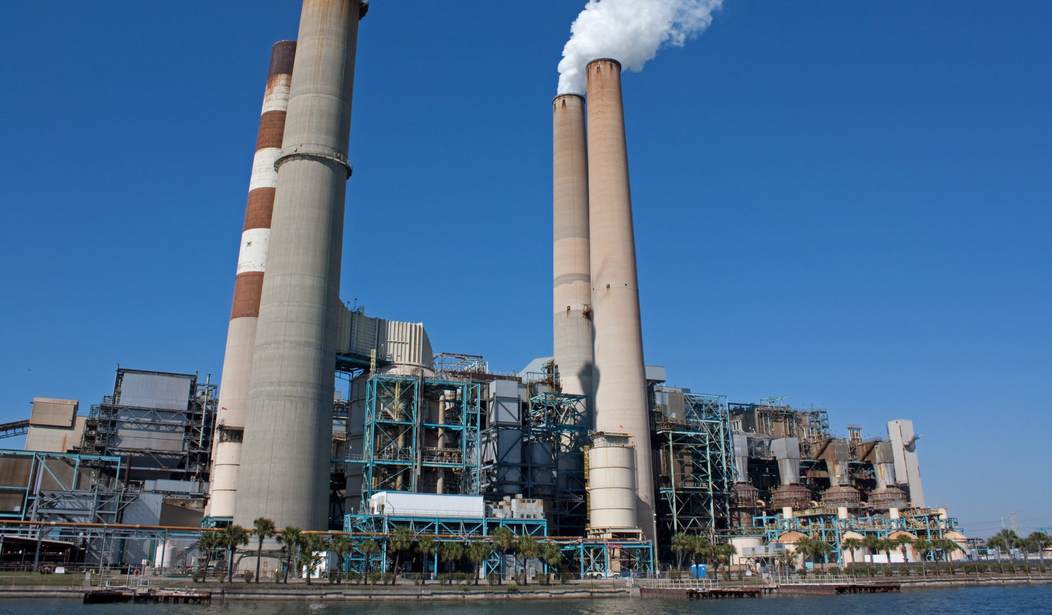WASHINGTON – The Environmental Protection Agency has imposed a set of new air quality standards on the nation’s coal-burning power plants aimed at slashing carbon emissions from 2005 levels by 30 percent within 16 years.
The long-anticipated new rules, announced by EPA Administrator Gina McCarthy under the direction of President Obama, mandate that the power sector use cleaner energy sources and cut energy waste to address issues of national health and global climate change. They take effect in 2015.
“Although we limit pollutants like mercury, sulfur, and arsenic, currently, there are no limits on carbon pollution from power plants, our nation’s largest source,” McCarthy said. “For the sake of our families’ health and our kids’ future, we have a moral obligation to act on climate. When we do, we’ll turn climate risk into business opportunity, we’ll spur innovation and investment, and we’ll build a world-leading clean energy economy.”
There are about 600 coal-fired power plants across America generating about 40 percent of the nation’s electricity. Those plants also are responsible for about one-third of all domestic greenhouse gas emissions, says the EPA. Last October, the agency imposed strict new greenhouse gas emissions standards on newly constructed power plants. This move completes the circle.
“The science is clear, the risks are clear and the high costs of climate inaction keep piling up,” McCarthy said. “Rising temperatures bring more smog, more asthma, and longer allergy seasons. If your kid doesn’t use an inhaler, consider yourself a lucky parent, because 1 in 10 children in the U.S. suffers from asthma. Carbon pollution from power plants comes packaged with other dangerous pollutants like particulate matter, nitrogen oxides, and sulfur dioxide, putting our families at even more risk.”
Objections came swiftly. Tom Donohue, president and CEO of the U.S. Chamber of Commerce, said the regulations “add immense cost and regulatory burdens on America’s job creators.”
“They will have a profound effect on the economy, on businesses and on families,” Donohue said.
Last week, the Chamber released a report maintaining that a regulation like the one promulgated by the administration will decrease a family’s disposable income by $3,400 per year and increase their electricity bills by $200. The report also estimates a loss of 224,000 jobs per year between 2014 and 2030.
Sen. David Vitter (R-La.), ranking member on the Senate Environment and Public Works Committee, said the rule is “all pain and no gain,” asserting that it is expected to have a less than 2 percent impact on carbon emissions reductions worldwide because other large producers like China and India are not involved.
“American families and businesses will have to shoulder all the costs and burden from this rule without contributing to any significant reduction in global carbon emissions,” Vitter said.
Businesses and Republicans weren’t the only ones protesting. Democrats from coal states, like Sen. Joe Manchin of West Virginia, said the regulation “does little to address the global problem with global solutions.”
“Instead, today’s rule appears to be more about desirability rather than reliability or feasibility, with little regard for rising consumer prices, the effects on jobs and the impact on the reliability of our electric grid,” Manchin said, adding that the proposed rules “are not based on any existing technology that has been proven on a commercial scale.”
But environmental groups celebrated. Frances Beinecke, president of the Natural Resources Defense Council, called the administration’s initiative “a giant leap forward in protecting the health of all Americans and future generations.”
“Strong carbon pollution standards will be good for our health, good for our economy and good for our children and all future generations.”
Gene Karpinski, president of the League of Conservation Voters, called the new regulation “the biggest step we’ve ever taken for the biggest challenge we’ve ever faced.”
“It helps meet our moral obligation to future generations to act on climate change at a time when we’re seeing impacts on our health and our communities nationwide,” Karpinski said. “This is a plan that can be shaped by the states, giving Governors the flexibility they need. The American people support these commonsense safeguards and are sick of the lie that pollution has to be the fuel of our economic engine. The desperate and dirty opponents of these safeguards are using a failed, outdated playbook to protect their profits.”
In a conference call involving representatives of public health groups, Obama asserted that “climate change is real” and “has serious impacts.” He predicted that electricity bills “will shrink as these standards spur investment in energy efficiency, cutting waste and ultimately we’re going to be saving money for homes and for businesses.”
“Now, I promise you, you will hear from critics who say the same thing they always say, that these guidelines will kill jobs or crush the economy,” Obama said. “What we’ve seen every time, is that these claims are debunked when you actually give workers and businesses the tools and the incentive they need to innovate. When Americans are called on to innovate, that’s what we do — whether it’s making more fuel-efficient cars or more fuel-efficient appliances, or making sure that we are putting in place the kinds of equipment that prevents harm to the ozone layer and eliminates acid rain.”
“At every one of these steps, there have been folks who have said it can’t be done. There have been naysayers who said this is going to destroy jobs and destroy industry. And it doesn’t happen because once we have a clear target to meet, we typically meet it. And we find the best ways to do it.”
Under the proposal, states will be given a year to develop plans to meet EPA carbon reduction targets. States will be provided with the authority to meet the standards in several ways, including via power plant improvements, switching from coal to natural gas, improving energy efficiency and embracing renewable energy in areas outside of the coal-fired plans. States that fail to settle on effective plans will have one implemented by the EPA.
McCarthy said failing to act to reduce carbon emissions is already costing the U.S. money, noting that 2012 was the second most expensive year in U.S. history for natural disasters, which some scientists believe could be related to global warming.
“Even the largest sectors of our economy buckle under the pressures of a changing climate and when they give way, so do businesses that support them, and local economics that depend on them,” McCarthy said. “As our seas rise, so do insurance premiums, property taxes, and food prices. If we do nothing, in our grandkids’ lifetimes, temperatures could rise 10 degrees and seas could rise four feet.”
“This is not just about disappearing polar bears or melting ice caps,” she said. “This is about protecting our health and our homes. This is about protecting local economies and jobs.”
Despite objections, polls establish that most people approve of the idea of the federal government reducing greenhouse gas emissions even if it results in higher energy costs. A Washington Post-ABC News Poll determined that 70 percent of those surveyed support carbon limits on existing power plants and expressed a willingness to pay an extra $20 a month to do so.
Foes already are talking about filing suit to halt implementation but that could prove difficult. The U.S. Supreme Court in a number of recent rulings has held that the EPA has broad authority to regulate emissions.
In a 6-2 ruling on May 3, the high court held that the EPA has the authority to regulate emissions produced by coal-fired power plants in order to protect downwind states from deleterious effects of pollution.









Join the conversation as a VIP Member